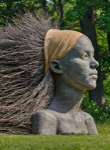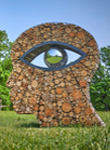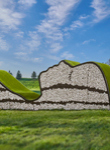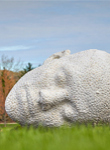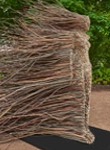Douglas-fir is excellent as a specimen plant or used en masse for screening. Although not a true fir, it is a beautiful evergreen for the larger landscape. It has a conical shape, similar to that seen on spruces.
- Family (English) Pine
- Family (botanic) Pinaceae
- Planting site Residential and parks
- Tree or plant type Tree
- Foliage Evergreen (foliage year-round)
- Native locale North America
- Size range Large tree (more than 40 feet)
- Mature height 40-80 feet
- Mature width 12-20 feet
- Light exposure Full sun (6 hrs direct light daily), Partial sun / shade (4-6 hrs light daily)
- Hardiness zones Zone 4, Zone 5 (Northern Illinois), Zone 6 (City of Chicago)
- Soil preference Moist, well-drained soil
- Tolerances Alkaline soil, Road salt
- Season of interest early winter, midwinter, late winter, early spring, mid spring, late spring, early summer, midsummer, late summer, early fall, mid fall, late fall
- Flower color and fragrance Inconspicuous
- Shape or form Pyramidal
- Growth rate Moderate, Slow
- Transplants well Yes
- Wildlife Birds, Mammals
- Has cultivars Yes

